Commercial Mortgage Broker Vancouver | Expert Financing for Warehouses, Offices, Retail, Hotel & Multi-Family | Morning Lee
Leading commercial mortgage broker securing loans for warehouses, offices, retail, plaza, stripe mall, hotels & multi-family properties. Get tailored financing solutions with competitive rates.
Vancouver’s Premier Commercial Mortgage Broker
*Funded for Industrial, Retail & Hospitality Properties*
Why 87% of Vancouver Investors Choose a Specialized Commercial Mortgage Broker
Navigating commercial financing requires expertise in:
- Asset-Specific Underwriting: Warehouse clearance heights vs hotel occupancy metrics
- Market Cycle Timing: Capitalizing on cap rate fluctuations
- Complex Deal Structuring: CMHC-insured multi-family vs conventional industrial loans
- Zoning-Driven Valuations: Industrial vs mixed-use premiums
Commercial Property Financing Solutions
Tailored Mortgage Structuring by Asset Class
Warehouses & Industrial Facilities
Financing for last-mile logistics, manufacturing & distribution
- Clearance height premium financing
- Power supply infrastructure loans
- Cross-dock facility specialized programs
Office Buildings
Downtown core towers to suburban flex spaces
- Tenant improvement allowance financing
- Green building certification incentives
- Vacancy rate bridge solutions
Retail Stores & Shopping Centers
Anchor tenant-dependent financing strategies
- Pad site construction loans
- Renovation financing during tenant turnover
- Sales volume-based underwriting
Multi-Family Buildings
*5+ unit apartment building expertise*
- CMHC-insured refinancing
- Value-add repositioning loans
- Rent roll analysis optimization
Hotels & Hospitality
Occupancy-driven financing solutions
- RevPAR-based underwriting
- Renovation PIP financing
- Seasonal cash flow accommodations
Plaza and Strip Malls
Financing anchored retail centers and neighborhood plazas
- Anchor tenant credit analysis (national vs local)
- Pad site acquisition and development loans
- Renovation financing for tenant retention
- Vacancy rate bridge solutions during repositioning
- Sales volume-based loan covenants
- Outparcel financing opportunities
- CAM cost recovery underwriting
Special Purpose Properties
Unique asset financing
- Automotive service centers
- Self-storage facilities
- Gas stations/C-stores
The Commercial Mortgage Broker Advantage
Why Developers & Investors Partner With Us
Access to 1100+ products / Lender Channels
- Big 6 Banks
- Credit Unions
- Private Funds
- CMHC Providers
Deal Engineering Expertise
Rate Negotiation Mastery
- Average 0.92% lower rates than direct bank offers
- 30-120 day rate hold guarantees
- Pre-approval leverage for off-market acquisitions
Our Commercial Mortgage Process
Four-Phase Approval Framework
- Asset Strategy Session
- Property type-specific underwriting assessment
- Cash flow optimization analysis
- Lender Matchmaking
- institution pre-screening
- Loan scenario modeling (term, amortization, covenants)
- Submission Crafting
- Bank-grade proposal packaging
- NOI enhancement documentation
- Closing Coordination
- Legal/tax specialist integration
- Draw administration for construction loans
Why Vancouver’s Top Developers Trust Our Commercial Mortgage Broker Team
Quantifiable Expertise
- 30+ years team financing Vancouver commercial real estate
- High approval rate on complex deals
- Portfolio financing for many business owners and investors
Client Protection Framework
- No upfront broker fees
- Full lender fee transparency
- Ongoing rate monitoring
- Refinancing advantage alerts
Start Your Commercial Financing Journey
Step 1: Property Assessment
Step 2: Lender Matching
Book Asset Strategy Call
Step 3: Loan Structuring
“While banks see property types, we see potential. Let us unlock your asset’s financing power.”
— Commercial Mortgage Broker Morning Lee
Resources:
-

How Many Credit Cards Should I Have?
When it comes to managing your credit cards, there’s no one-size-fits-all answer. However, many financial experts suggest that maintaining two to three active credit cards is a smart approach, especially when combined with other forms of credit like student loans, auto loans, or mortgages.
But why is that the case? Let’s break it down.
Why Two to Three Credit Cards?
The number of credit cards you have plays a role in your credit score, but it’s not just about quantity. It’s about how well you manage your credit. Typically, having two or three credit cards can help improve your credit mix — a key factor that influences your credit score. When you manage these accounts responsibly, it signals to lenders that you understand how to handle borrowing effectively.
Moreover, the right mix of credit types — including credit cards, loans, and a mortgage — is what most lenders prefer to see. It shows that you can manage different kinds of debt, which is vital when applying for significant loans or mortgages.
How Do Multiple Credit Cards Affect Your Credit Score?
Multiple credit cards can actually help boost your credit score, primarily by lowering your credit utilization ratio. This ratio is the amount of credit you’re using compared to your total available credit. For example, if your total credit limit is $10,000 and you have $2,000 in debt, your credit utilization rate is 20%.
Most experts suggest keeping your utilization below 30%. If you’re above that threshold, it can harm your credit score. By opening a new credit card, you increase your total available credit, which lowers your utilization rate — potentially improving your score.
However, the key here is how well you manage your spending. Ensure that you’re making timely payments and not just paying the minimum balance. This will help you avoid late fees, high-interest rates, and debt accumulation.
The Risks of Having Too Many Cards
While having multiple credit cards can be beneficial, there are risks. It’s easy to fall into the trap of overspending. With each additional card comes a new set of due dates, interest rates, and fees, which can quickly become difficult to manage. This could lead to missed payments and a high credit utilization rate, both of which can negatively impact your credit score.
If you’re considering opening a new card, be sure that you can handle the extra responsibility. Keep track of your spending patterns, set up reminders for payments, and make sure you can meet the monthly obligations without going over your budget.
How Often Should You Apply for a Credit Card?
Applying for too many credit cards in a short period can hurt your credit score. When you apply for a new credit card, the lender performs a hard inquiry on your credit report. Too many hard inquiries within a short time frame can suggest to lenders that you’re overextending yourself and taking on too much debt, which could lower your credit score.
Therefore, only apply for a new credit card when it fits into your overall financial plan and you’re confident that it will be manageable.
When Is It Too Much?
While having two or three credit cards is typically recommended, some people might handle more without issue, especially if they have a clear strategy in place. However, for many people, more than three credit cards can become overwhelming and harder to manage.
The most important thing to remember is not how many cards you have, but how responsibly you use them.
Key Tips for Managing Multiple Credit Cards
- Monitor Your Balances: Keep track of how much you owe on each card. This will help you avoid missing payments or exceeding your credit limit.
- Pay On Time: Late payments can result in fees and damage your credit score. Set up automatic payments or reminders to make sure you’re never late.
- Pay in Full When Possible: Paying off your balance in full each month is the best way to avoid paying interest and to maintain a good credit score.
- Check Your Credit Report Regularly: Understand what lenders see when they pull your credit report. This gives you a better idea of how to improve your score.
What About Your Mortgage?
Managing your credit cards wisely is important, especially when you’re planning for larger financial goals like buying a home. Whether you’re a first-time buyer or looking to refinance, understanding your credit score is essential. The right financial tools can make all the difference in securing a mortgage that works for you.
For those of us facing rising living costs or looking for ways to maximize our home equity, reverse mortgages can offer financial relief. If you’re 55 or older, this may be an option worth exploring. A reverse mortgage can provide the financial cushion you need, allowing you to stay in your home while tapping into its equity.
Want to know more?
Reverse mortgages: 55+? A cushion against the rising cost of livingWhen it comes to managing your finances, it’s important to stay on top of your credit card usage. If you’re ready to take the next step in your financial journey, remember that MorningLee.ca is here to help with a range of mortgage and loan services designed to fit your needs.

-
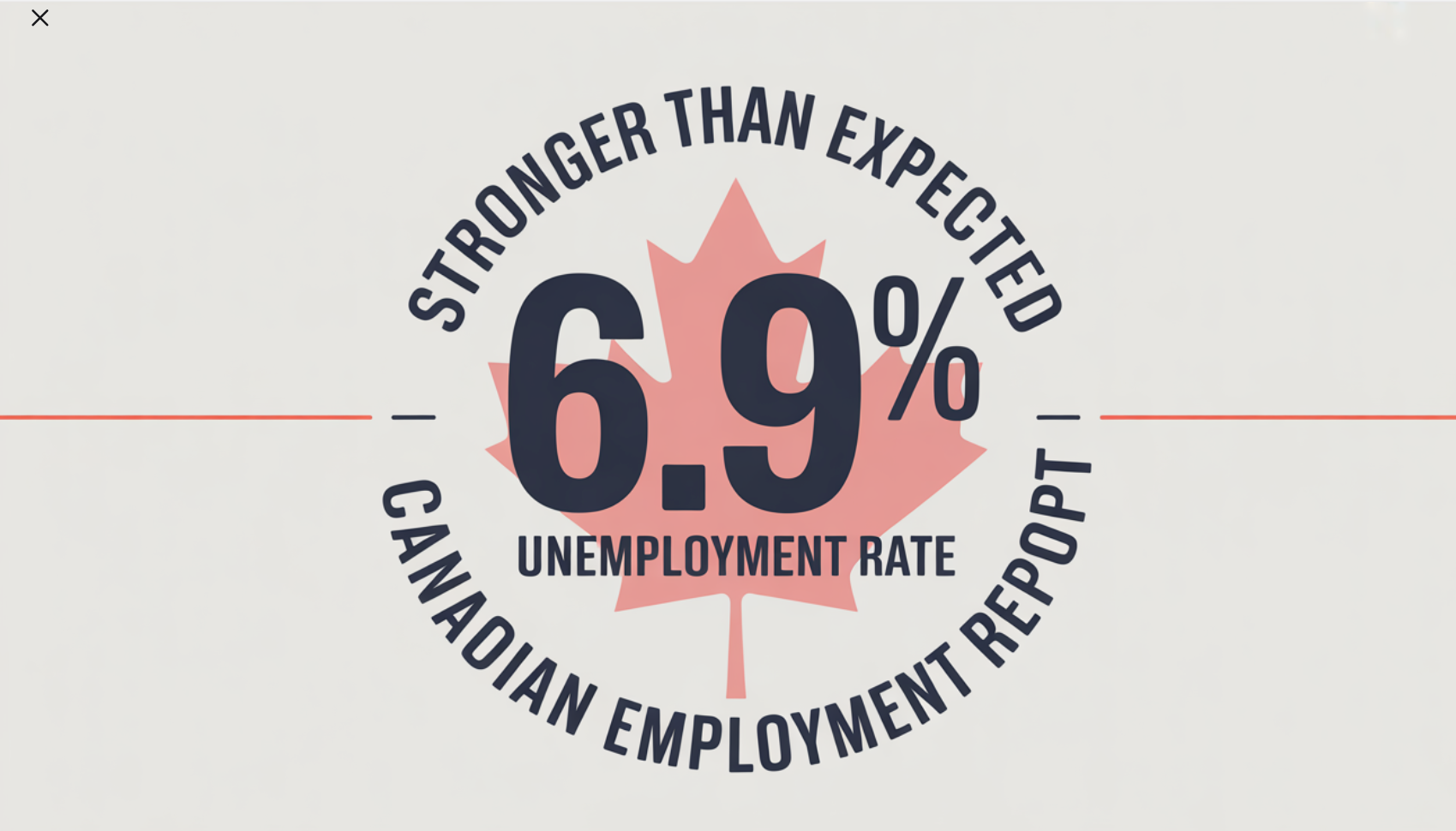
December BoC Rate Cut? October Labour Force Survey Much Stronger Than Expected

Labour Force Survey for October showed a stronger-than-expected net employment gain of 66,600, on the heels of September’s upside surprise. Cumulative gains in September and October (+127,000; +0.6%) have offset cumulative declines observed in July and August (-106,000; -0.5%).
Even more unexpected was the dip in the jobless rate from 7.1% in August and September to 6.9% last month. The Bank of Canada had already suggested that the overnight policy rate, at 2.25%, was low enough to spur growth and mute inflation.
The employment rate rose to 60.8%. The employment rate in October was unchanged year over year but remained below the recent high of 61.1% recorded in January and February 2025.
There were more people working in wholesale and retail trade (+41,000; +1.4%), transportation and warehousing (+30,000; +2.8%), information, culture, and recreation (+25,000; +3.0%), and utilities (+7,600; +4.6%). On the other hand, employment in construction declined by 15,000 (-0.9%).
Employment increased in Ontario (+55,000; +0.7%) and in Newfoundland and Labrador (+4,400; +1.8%), while it declined in Nova Scotia (-4,400; -0.8%) and Manitoba (-4,000; -0.5%).
Average hourly wages among employees increased 3.5% (+$1.27 to $37.06) on a year-over-year basis in October, following growth of 3.3% in September (not seasonally adjusted).
The employment increase in October was driven by part-time work (+85,000; +2.3%). This follows an increase in full-time work in September (+106,000; +0.6%). On a year-over-year basis, employment was up in both full-time work (+199,000; +1.2%) and part-time work (+101,000; +2.7%).
Private sector employment rose by 73,000 (+0.5%) in October, the first increase since June. There was little change in the number of public sector employees or self-employed workers in October.
Despite the employment increase in October, total actual hours edged down (-0.2%) in the month as an elevated number of employees lost work hours due to labour disputes occurring during the Labour Force Survey reference week (October 12 to 18).
An estimated 87,000 employees across the provinces lost work hours due to labour disputes during this period (not seasonally adjusted). This was particularly notable in Alberta, where a teachers’ strike and a subsequent lock-out led to the closure of most elementary and secondary schools in the province.
On a year-over-year basis, total actual hours were up 0.7% in October.

Even with the latest jobs report, the Canadian economy remains vulnerable to the unsettling US attitude towards the free trade agreement, which is slated to be renegotiated by July 2026. But Governor Tiff Macklem has said that fiscal stimulus would be more effective than monetary stimulus in response to tariff-generated weakness. Judging from this week’s federal budget 2025 announcements, fiscal stimulus will take considerable time to impact the overall economy.
The unemployment rate fell 0.2 percentage points to 6.9% in October. Prior to this decline, the unemployment rate had reached 7.1% in August and September, the highest level since May 2016 (excluding 2020 and 2021 during the COVID-19 pandemic).
Nearly one in five (19.8%) unemployed people in September had found work in October. This proportion (referred to as the job finding rate) was up from 12 months earlier (16.5%) but was lower than the average for the same months from 2017 to 2019 (24.6%) (not seasonally adjusted).

Bottom Line
The Bank of Canada has made it clear that it will focus on inflation and will leave closing the output gap to fiscal policy. By early next year, it will be clear to the Bank of Canada that fiscal stimulus in the form of significant capital spending projects is just too slow. I expect the Bank of Canada to take the overnight rate down to 2.0% in early 2026.Dr. Sherry Cooper
-
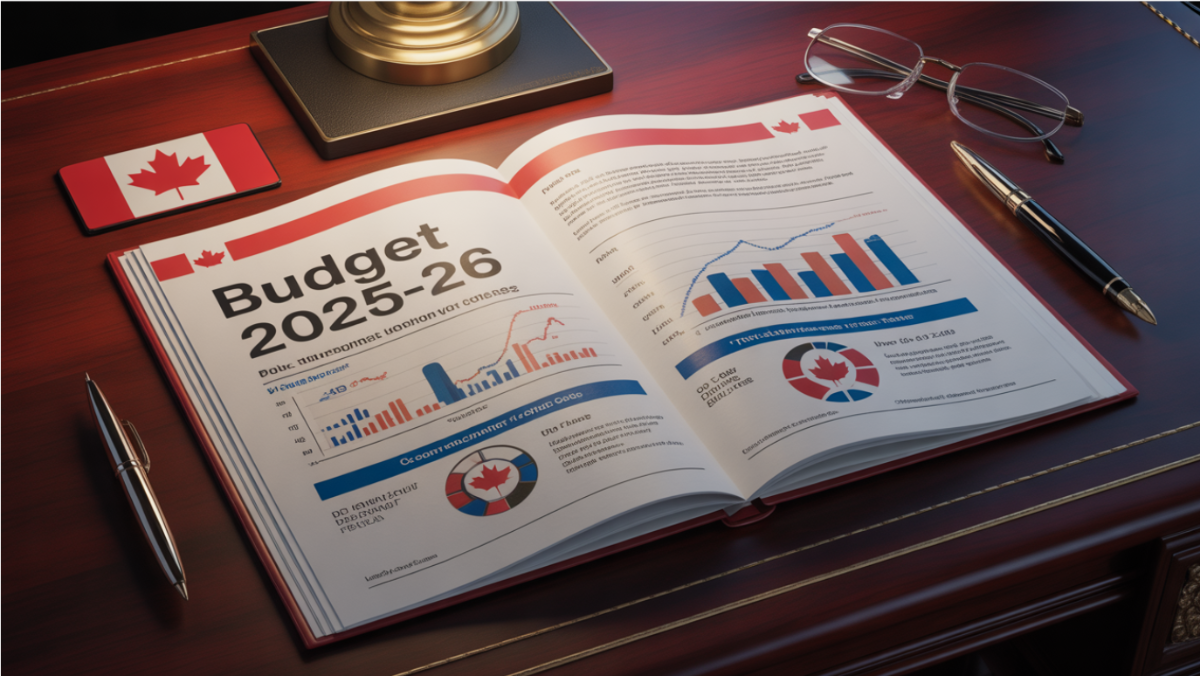
Federal Budget Revamp, FY 2025-2026
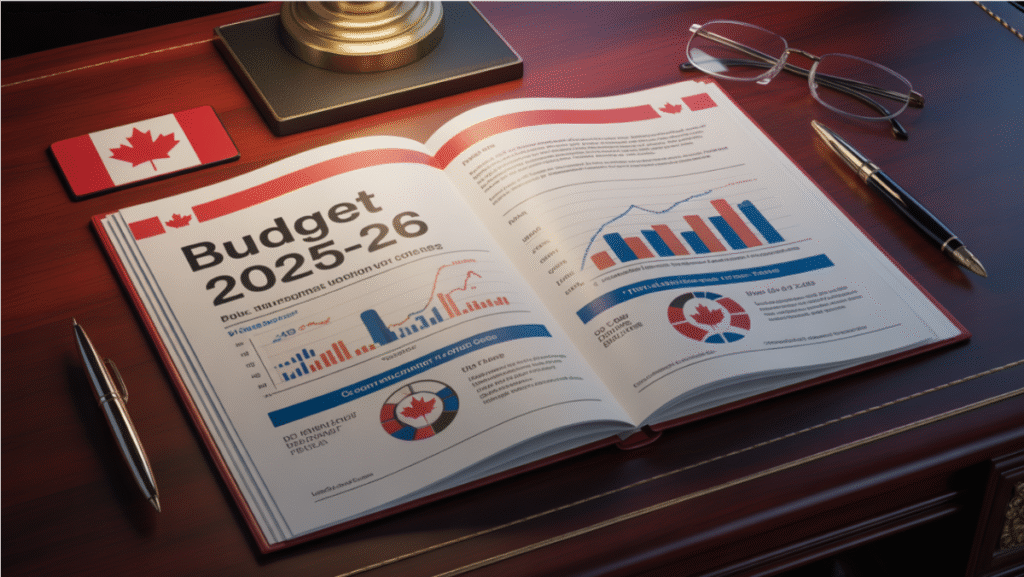
Today, Finance Minister François-Philippe Champagne presented his first budget. Mark Carney was elected Prime Minister with a mandate to transform Canada’s economy and reduce its dependence on trade with the United States. The Carney government’s inaugural budget emphasizes structural changes to strengthen the domestic economy and boost non-U.S. exports, and it will be funded by an increase in government debt.
Carney, a former central banker who took office in March, has committed to decreasing reliance on the U.S. by increasing military spending, accelerating infrastructure projects, speeding up housing construction, and enhancing business competitiveness. Given the current large deficits and a rising debt-to-GDP ratio, the government cannot afford higher long-term interest rates. Carney has promised to build a stronger Canada using domestic resources and labour, noting that only 40% of the steel used in Canada is produced domestically, and he intends to change that.
Champagne has cautioned that the public service will need to shrink as the government strives to balance the budget in the coming years. Carney also faces a political challenge in convincing some opposition members to support his budget or at least abstain from voting against it. His Liberal Party caucus is currently three seats short of a majority in the House of Commons, meaning it cannot pass the budget on its own.
Unemployment remains high, economic growth is weak, and exporters, along with business investment, are still struggling due to U.S. tariffs. Carney and Champagne must persuade citizens that jobs, real wages, and living standards will eventually improve if they can stimulate both domestic and foreign investment.
Last week, the Bank of Canada indicated that it is nearing the limit of monetary stimulus it can provide without triggering inflation. Governor Tiff Macklem has consistently stated that he sees fiscal policy as a more effective tool to counter the adverse effects of the trade war, which he perceives as a negative supply shock.
The chart above indicates that Canada not only had the lowest deficit-to-GDP ratio in the G-7 but also among all countries with a triple-A credit rating. However, the rate at which we are issuing net new debt is expected to accelerate over the next year or two. Canada needs to assure the bond market that we will maintain our triple-A credit rating to keep financing costs manageable.
Ottawa has divided the budget into two parts: the operating budget and the capital spending budget. The operating budget covers the costs of running the federal government, which includes salaries, wages, rent, and interest payments on the debt. Carney has urged government leaders to review their operating budgets and eliminate unnecessary costs, which include downsizing the federal workforce.
A similar approach is used in countries like the United Kingdom and New Zealand, as well as by some provinces here at home. In principle, this shift could enhance transparency by allowing a better understanding of how public funds are allocated between day‑to‑day program spending and long‑term investments intended to boost future growth.
The capital spending budget is more complex because it’s harder to determine which expenditures will enhance growth and productivity. For instance, while the government is increasing defence spending to meet our NATO obligations, not all of it will contribute to productivity growth.
Ottawa’s agenda highlights major infrastructure projects, defence initiatives, housing, significant undertakings like pipelines, enhanced ports, and the development of the Ring of Fire. Federal leadership believes there is a role for industrial policy, as well as measures aimed at broad deregulation and tax competitiveness.

This year’s federal budget projects a deficit of $78.3 billion—nearly double the Liberals’ projection a year ago—prioritizing capital project spending over services. The deficit is expected to decrease gradually to $56.6 billion by 2029-30. Only a year ago, the Liberals forecast a 2025 budget deficit of $42.2 billion, but that was before trade uncertainty and tariff inflation hit our shores with the inauguration of Donald Trump last January.
The budget presents both downside and upside scenarios. In the downside scenario, ongoing trade uncertainty could worsen the budgetary balance by $9.2 billion annually, while the upside scenario anticipates a $5 billion annual improvement contingent on easing trade uncertainties.
Finance Minister François-Philippe Champagne emphasized the need for “generational” investments, allocating $25 billion to housing, $30 billion to defence, and $115 billion to infrastructure over the next five years. He criticized proposals to cap the deficit at $42 billion, advocating instead for investments to drive future growth.
The 2025 budget introduces a new format that separates capital and operational spending, with capital investments accounting for 58% of this year’s combined deficit. This shift aims to catalyze $500 billion in private-sector investment. However, we should be skeptical that such animal spirits will materialize quickly, given the immense uncertainty about the future of the Canada-Mexico-US free trade agreement.
The budget pledges to balance operational spending in three years.
Ottawa has been running a “comprehensive expenditure review” to spend less on the day-to-day operations of the federal government. According to the budget, that plan will save $13 billion annually by 2028-29, for a total of $60 billion in savings and revenues over five years.
The budget promises more taxpayer dollars will go toward “nation-building infrastructure, clean energy, innovation, productivity and less on day-to-day operating spending.” This “new discipline” will help protect social benefits, the budget promises.
The public service will see a drop of about 40,000 positions over the coming years. The budget projects it will have 330,000 employees in 2028-29, down from the 368,000 counted last year.
To confront an anemic economic picture, the government says it’s “supercharging growth” and vows to “make Canada’s investment environment more competitive than the U.S.”
To that end, the budget introduces a “productivity super-deduction” tax measure that will allow companies to write off a larger share of capital investments more quickly.
There are also new measures specifically for writing off expenses for manufacturing or processing buildings, as well as a new capital cost allowance for liquefied natural gas (LNG) equipment and related buildings.
Build Baby Build
Fast-tracking nation-building projects: In close partnership with provinces, territories, Indigenous Peoples, and private investors, the government is streamlining regulatory approvals and helping to structure financing.Additional Cuts to Immigration
Selling it as Ottawa “taking back control” over an immigration system that has put pressure on Canada’s housing supply and health-care system, budget 2025 promises to lower admission targets.The new plan proposes to drastically reduce the target for new temporary resident admissions from 673,650 in 2025 to 385,000 in 2026.
The 2026-28 immigration levels plan would keep permanent resident admission targets at 380,000 per year, down from 395,000 in 2025.
Ending Some High-End Taxes
The government is also proposing to undertake a one-time measure to accelerate the transition of up to 33,000 work permit holders to permanent residency in 2026 and 2027.“These workers have established strong roots in their communities, are paying taxes and are helping to build the strong economy Canada needs,” the budget notes.
To fill labour gaps, the Liberals’ plan includes a foreign credential recognition action fund to work with the provinces and territories to improve transparency, timeliness and consistency of foreign credential recognition.
It would also launch a strategy to attract international talent, including a one-time initiative to recruit over 1,000 highly qualified international researchers to Canada.
In addition, there were billions of dollars in increased defence spending, the details of which are still sketchy.




Bottom Line
Nothing in this budget is surprising, as most of it has been telegraphed in recent weeks. The budget asserts that “the global trade landscape is changing rapidly, as the United States reshapes its economic relationships and supply chains around the world. The impact is profound—hurting Canadian companies, displacing workers, disrupting supply chains, and creating uncertainty that holds back investment. This level of uncertainty is greater than what we have seen in recent crises. Budget 2025 makes generational investments while maintaining Canada’s strong fiscal advantage—a foundation that allows us to invest ambitiously and responsibly, and build Canada’s economy to be the strongest in the G-7.”
Canada has the lowest net debt-to-GDP ratio among the G-7 and one of the smallest deficit-to-GDP ratios. Canada and Germany are the only two G-7 economies rated triple-A, a marker of strong investor confidence which helps keep our borrowing costs as low as possible. This is a time for bold actions to bolster Canada’s competitiveness. We have products the world needs. Hopefully, we can salvage a significant part of the trade agreement with the US, but the odds suggest we build the infrastructure necessary to trade our products worldwide.
Dr. Sherry Cooper
-
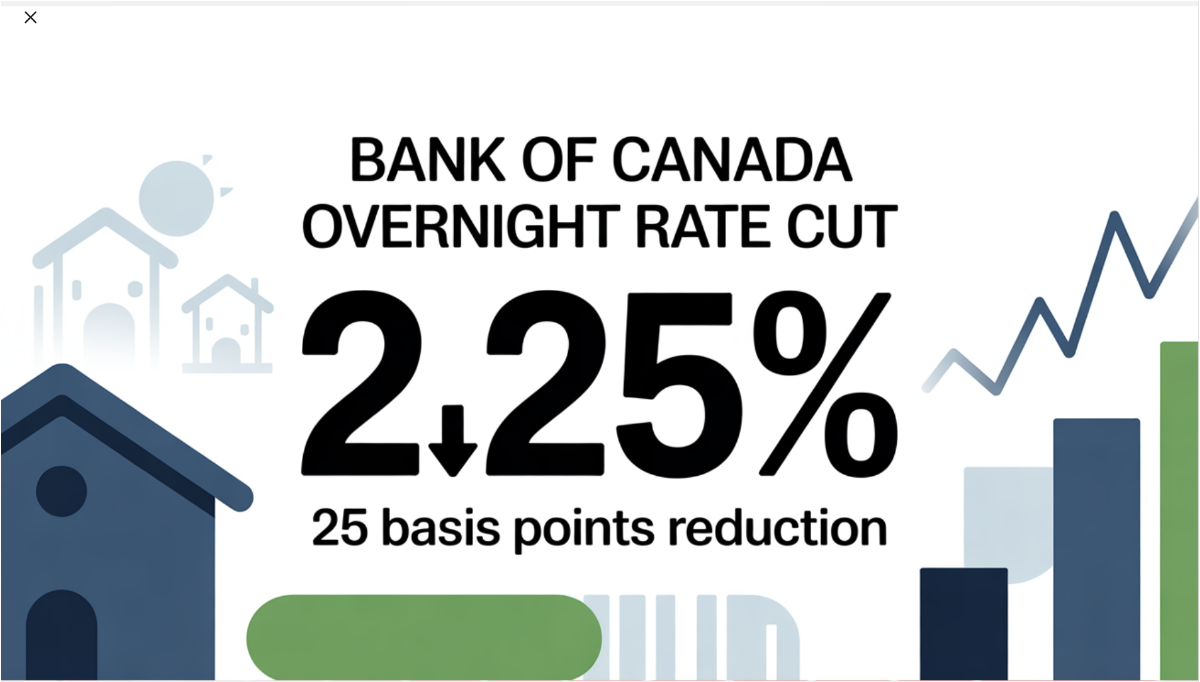
Bank of Canada Lowers Policy Rate to 2.25%
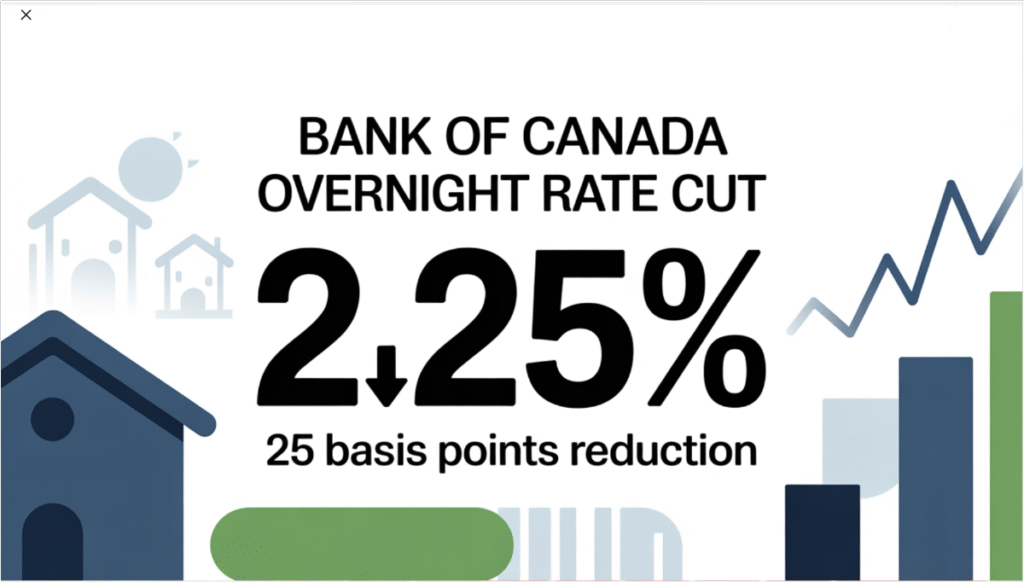
Today, the Bank of Canada lowered the overnight policy rate by 25 bps to 2.25% as was widely expected. This is the bottom of the Bank’s estimate of the neutral overnight rate, where monetary policy is neither expansionary nor contractionary. The economy will grow at about a 0.5% pace in Q3, causing the Bank to cut rates again at the final meeting this year on December 10. The easing will then end, but rates will remain relatively subdued until more trade uncertainty is alleviated.
The Fed is widely expected to cut rates by 25 bps this afternoon as well.
Today’s Monetary Policy Report suggests that the significant decline in export growth will persist for some time. Layoffs in trade-dependent sectors have already slowed considerably, especially in Ontario, Quebec, and some softwood lumber businesses in several provinces. The central bank acknowledged that “because US trade policy remains unpredictable and uncertainty is still higher than usual, this projection is subject to a wider-than-normal range of risks.”
“In the United States, economic activity has been strong, supported by the boom in AI investment. At the same time, employment growth has slowed and tariffs have started to push up consumer prices. Growth in the euro area is decelerating due to weaker exports and slowing domestic demand. In China, lower exports to the United States have been offset by higher exports to other countries, but business investment has weakened. Global financial conditions have eased further since July and oil prices have been fairly stable. The Canadian dollar has depreciated slightly against the US dollar.”
“Canada’s economy contracted by 1.6% in the second quarter, reflecting a drop in exports and weak business investment amid heightened uncertainty. Meanwhile, household spending grew at a healthy pace. US trade actions and related uncertainty are having severe effects on targeted sectors, including autos, steel, aluminum, and lumber. As a result, GDP growth is expected to be weak in the second half of the year. Growth will get some support from rising consumer and government spending and residential investment, and then pick up gradually as exports and business investment begin to recover.”
Canada’s labour market remains soft, and job vacancies have declined sharply despite the September improvement in job growth. Job losses continue to mount in trade-impacted sectors, and hiring has been weak across the economy. The unemployment rate remained at 7.1%, well above the US rate of 4.3%. Slower population growth translates into fewer new jobs and less inflation pressure. On a per capita basis, the economy is already in a recession.

The Bank projects GDP will grow by 1.2% in 2025, 1.1% in 2026 and 1.6% in 2027. Quarterly, growth strengthens in 2026 after a weak second half of this year. Excess capacity in the economy is expected to persist and be gradually absorbed.
“CPI inflation was 2.4% in September, slightly higher than the Bank had anticipated. Inflation excluding taxes was 2.9%. The Bank’s preferred measures of core inflation have been sticky around 3%. Expanding the range of indicators to include alternative measures of core inflation and the distribution of price changes among CPI components suggests underlying inflation remains around 2.5%. The Bank expects inflationary pressures to ease in the months ahead and CPI inflation to remain near 2% over the projection horizon”.
“If inflation and economic activity evolve broadly in line with the October projection, the Governing Council sees the current policy rate at about the right level to keep inflation close to 2% while helping the economy through this period of structural adjustment. If the outlook changes, we are prepared to respond. Governing Council will be assessing incoming data carefully relative to the Bank’s forecast.”
Bottom Line
The Bank of Canada has shown its willingness to bolster the Canadian economy amid unprecedented trade uncertainty. While Canada is working hard to establish alternate trade partners, even China cannot replace the US in terms of proximity and cost-effectiveness, given the huge transport costs. China has stepped up its oil purchases to record levels, but larger oil flows east will require additional pipelines to BC. There is no market the size of the US market to replace exports of steel and aluminum. The US will also suffer from the economic impact of stepping away from the Canada-US-Mexico free trade deal. A renegotiation of the contract is likely to come before the end of next year. As of now, the US is signalling their desire to exit the agreement. We can only hope that cooler heads will prevail.
The auto industry is a case in point. Onshoring non-US auto production would require a 75% increase in US production and the construction of $50 billion in new factories. This would take years and significantly reduce the profitability of US auto companies.
Canada is the US’s number one supplier of steel and aluminum, with its competitively low hydroelectric costs. It will take time for the US to create the capacity to replace aluminum imports from Quebec.
Canada is the number one trading partner for 32 American states, many of which are lobbying Washington to end this CUSMA bashing.
It will take time for Canada to adjust to this new reality, which leads us to conclude that another cut in overnight rates is probable at the next decision date on December 10.

Dr. Sherry Cooper
-
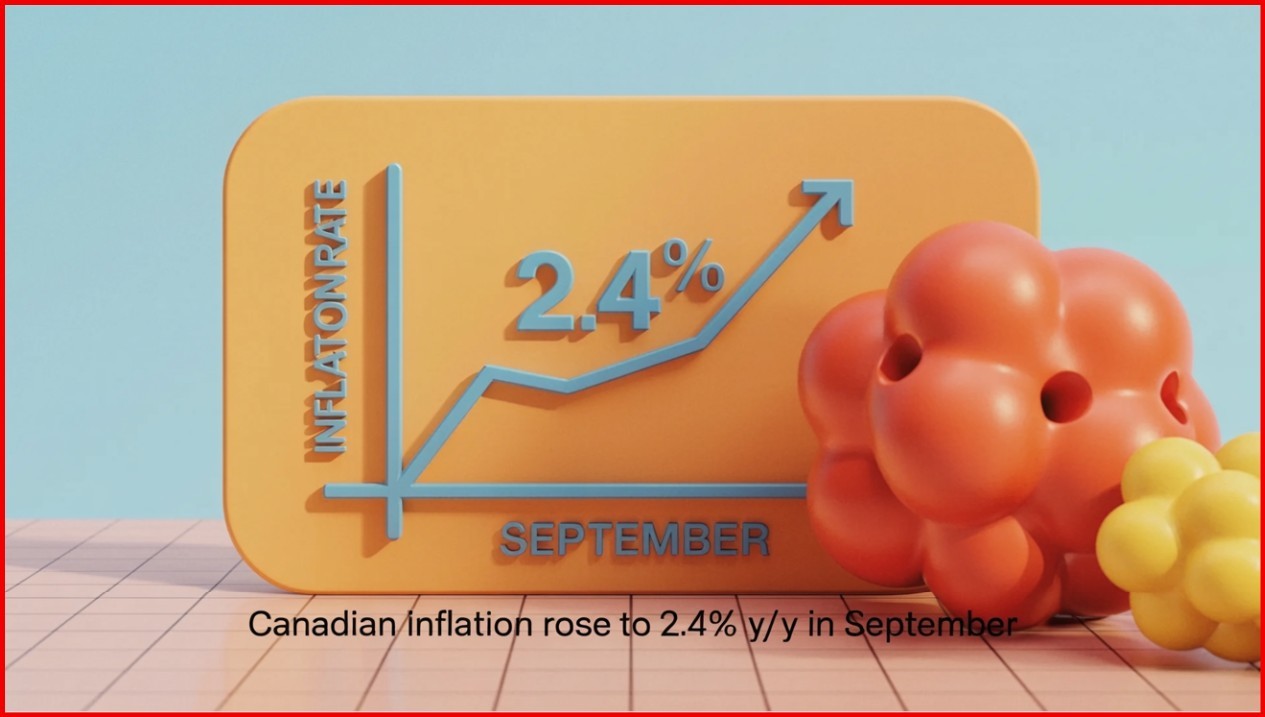
Canadian Inflation Stronger Than Expected
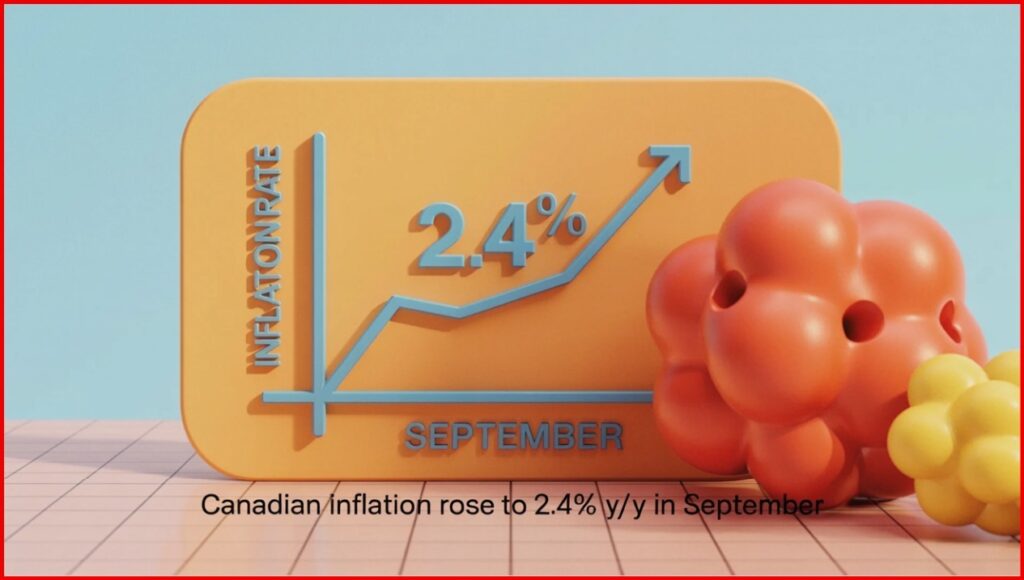
The Consumer Price Index (CPI) rose 2.4% on a year-over-year basis in September, up from a 1.9% increase in August. The acceleration in headline inflation from 1.9% in August was also larger than the median projection in a Bloomberg survey of economists, which was 2.2%.
On a year-over-year basis, gasoline prices fell less in September (-4.1%) compared with August (-12.7%) due to a base-year effect, leading to an acceleration in headline inflation. Excluding gasoline, the CPI rose 2.6% in September, after increasing 2.4% in August.
A slower year-over-year decline in prices for travel tours (-1.3%) and a larger increase in prices for food purchased from stores (+4.0%) also contributed to the upward pressure in the all-items CPI in September.
The CPI rose 0.1% month over month in September. On a seasonally adjusted monthly basis, the CPI was up 0.4%.
Gasoline prices fell 4.1% year over year in September after a 12.7% decrease in August. The smaller year-over-year decline was primarily due to a base-year effect. In September 2024, prices fell 7.1% month over month due, in part, to lower crude oil prices amid growing concerns of weaker economic growth, particularly in China and the United States. In September 2025, gasoline prices rose 1.9% monthly following refinery disruptions and maintenance in the United States and Canada, which put upward pressure on prices.
On a year-over-year basis, prices for travel tours fell 1.3% in September following a 9.3% decline in August. Despite typically declining on a month-over-month basis in September, travel tour prices rose 4.6% in the month. This was a result of higher prices for destinations in Europe and some parts of the United States, as significant events in destination cities put upward pressure on hotel prices.
Consumers paid 4.0% more year over year for food purchased from stores in September, following a 3.5% increase in August. Faster price growth was driven by increased prices for fresh vegetables (+1.9% in September, compared with -2.0% in August) and sugar and confectionery (+9.2% in September, compared with +5.8% in August).
Year-over-year grocery price inflation has generally trended upward since its most recent low in April 2024 (+1.4%). Grocery items contributing to the general acceleration included fresh or frozen beef and coffee, both due, in part, to lower supply.
Tuition fees, priced annually in September, increased 1.7% in 2025 compared with a 1.8% increase in 2024. Aside from 2019, the 2025 increase was the smallest since 1976, when the index was unchanged (0.0%).
In 2025, students from Prince Edward Island (+4.7%) experienced the largest price increase. At the same time, students from Nova Scotia (+1.1%) and Ontario (+1.1%) had the smallest increase, coinciding with a freeze on tuition fees in both provinces.

Bank of Canada Deputy Governor Rhys Mendes recently warned that traders may be putting too much emphasis on its two “preferred” core inflation measures, the so-called trim and median gauges.
In September, both CPI-median and CPI-trim came in hotter than economists were expecting. The average of these metrics was 3.15% in September, while the three-month moving average accelerated to 2.7%.
Mendes said the central bank is weighing a broader suite of gauges that suggest underlying price pressures are closer to its 2% target.
Shelter inflation rose 2.6% on an annual basis, while CPI excluding food and energy was 2.4%. CPI excluding eight volatile components and indirect taxes was 2.8%, up from 2.6%.
CPI excluding taxes accelerated to 2.9% from 2.4% the previous month.The share of components within the consumer price index basket that are rising 3% and higher — another key metric that policymakers are watching closely — declined slightly to 38%.
All 10 Canadian provinces saw prices rising at a faster year-over-year pace in September compared with August. Quebec experienced the steepest price growth, reaching 3.3% last month.
Rent prices also accelerated nationally to 4.8%, led by a 9.8% increase in Quebec. Slower rent price growth of 1.8% in British Columbia moderated the national increase, the report noted.

Bottom Line
The report shows that underlying price pressures remain elevated, raising questions about how quickly the central bank can proceed with rate cuts to aid the tariff-hit economy.
Still, the acceleration in headline and most core measures was driven by a gasoline price base-year effect — a possible reason for analysts to look through the print.
Traders in overnight swaps pared bets on a rate cut next week, lowering the odds to about 65% from close to 80% before the report. The loonie jumped to the day’s high against the US dollar. Canadian debt fell across the curve, with the two-year yield rising about three basis points to a session high at 2.38%.
The ongoing trade war with the US drove the Bank of Canada to lower its policy rate by a quarter of a percentage point to 2.5% in September, marking the first cut in six months.
During their deliberations last month, some members of its governing council argued that more support would likely be needed given the softness in the economy, notably if the labour market weakened further.
Bank of Canada Governor Tiff Macklem recently described Canada’s labour market as “soft,” despite data showing the country added 60,400 jobs in September, which only partially reversed a decline of more than 100,000 positions over the previous two months.
The central bank will have to weigh recent economic weakness against concerns about firm core inflation over the past few months. The BoC will cut the overnight policy rate again by 25 bps to 2.25%, responding to its concern for the sectors hardest hit by tariffs, along with a housing market suffering from negative household psychology and overbuilding in the GTA and GVA.
Dr. Sherry Cooper